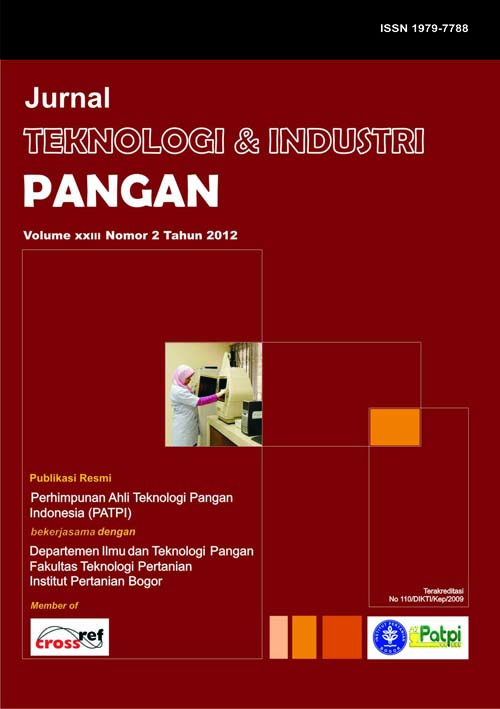QUANTIFICATION OF Salmonella Typhimurium REDUCTION DURING COLD STORAGE OF RAW SHRIMPS IN THE PRESENCE OF SODIUM METABISULFITE [Kuantifikasi Reduksi Salmonella Typhimurium pada Udang Segar selama Penyimpanan Dingin dengan Penambahan Natrium Metabisulfit]
Abstract
Prediction of bacterial growth, survival or reduction in food matrices is needed for microbiological risk assessment. The survival of Salmonella Typhimurium on surfaces of raw shrimps at low temperature was studied, in the presence of sodium metabisulfite which is often used to prevent melanosis. The growth and/or reduction rates were quantified using DMFit software with Baranyi model and or linear model. The result showed that without sodium metabisulfite (control), when the initial level was high (105 CFU/ml), S. Typhimurium grew with a lag phase of 51.99±7.46 h and a growth rate of 0.01±0.002 log CFU.ml-1.h-1 on raw shrimps during storage at 8±2°C. When 1.5% (w/w) sodium metabisulfite, a maximum level that often used to prevent melanosis, was added under the same condition, the number of S. Typhimurium was reduced for 5 log CFU/ml after 5 days, with a reduction rate of -0.03±0.001 log CFU.ml-1.h-1. This study indicated that Baranyi model can be used to predict the growth of S. Typhimurium on raw shrimp at low temperature, when sodium metabisulfite is absent. However, when sodium metabisulfite is present, at least 0.4% as found in this study, the reduction of S. Typhimurium can be predicted using a simple linear model.

